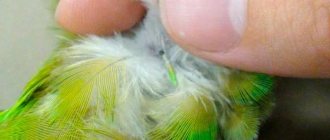Why do you need aquarium glue?
Beginners in fish breeding prefer to buy ready-made containers, while professional breeders often make aquariums with their own hands. This allows you to achieve a unique design, the required width and length, and provide for the placement of decorative elements and aquatic plants.
The glue will also be useful in case of breakage: cracks on the walls, bottom or lid, as well as in case of depressurization of joints. In any case, the glue must have certain characteristics. Simple water resistance and durability are not enough here.
Is it possible to protect wooden furniture and expensive floors from excess water?
A special AquaBast SIREN sensor, which begins to signal at the first, weakest signs of a leak, helps maintain harmony between our world and the water world.
Thanks to the waterproof case and built-in lithium-ion battery, AquaBast SIREN will serve faithfully for many years. The main thing is to avoid constantly keeping the device in water. By the way, when the battery charge is exhausted, the sensor will give a series of signals and turn off. After replacing the “power”, the device will work reliably again. This device is universal: it can be installed not only on aquariums, but also in other places where water is most likely to leak (for example, under washing machines and dishwashers, sinks, bathrooms, etc.).
Modern control technologies, of course, will not get rid of aquarium leaks, but they will prevent a household disaster, and therefore unnecessary costs.
The device can be purchased in the aquarium products section. Please note that there are other useful devices here that create a comfortable environment for the fish and their owners.
What kind of sealant should it be?
Sealants are used to bond glass. Such products are produced in a wide range, but not every sample is suitable for repairing an aquarium. A few mandatory requirements:
- Elasticity. The walls of the aquarium will be constantly exposed to water. The glue must not only withstand lateral pressure, but also adapt to such conditions. Due to the excessive strength of the adhesive seam, cracks may appear in the glass.
- Reliability. The sealant will be exposed to water from the inside and air and light from the outside. It must also withstand the temperature difference between the water and the room.
- Safety. The glue must not be toxic. Otherwise, it will pose a danger to the inhabitants of the aquarium - fish and plants. Some sealants begin to release harmful substances when in contact with water, for example, construction asphalt sealant and other synthetic adhesives.
- The composition should not contain antibacterial substances. They negatively affect the fish. The inscription “antifungal” or “antimicrobial” is a reason to refuse the purchase.
- The dyes in adhesives not intended for aquarium use can be harmful to plants and creatures.
- Sealants are acidic and neutral. For a fish house it is permissible to use only neutral ones.
Types of sealants
What to rely on when choosing glue? Look at the composition of the product:
- Acrylic sealants are susceptible to moisture and have a low level of adhesion, so they are not suitable.
- Bitumen, polyurethane and polysulfide compounds are used only in construction and are not suitable for assembling and repairing fish housing.
- Butyl sealant is a good option for aquariums, but it is not very durable.
- An acceptable option is epoxy glue, but before applying it you need to thoroughly clean the surfaces, and it also takes a long time to set and has a runny consistency, which complicates the work.
- Silicone adhesive sealant is elastic. This is a universal product that is used in everyday life for different purposes. Silicone adheres well to various surfaces and does not emit toxic substances. It is best to choose this type of sealant for an aquarium.
- You can try cold welding. This glue sets in minutes and has a chemically neutral composition.
Advantages of silicone sealant:
- Does not emit harmful substances either upon contact with water or into the air.
- No special protective equipment is required to work with it.
- Convenient to use.
- Long service life.
- It hardens quickly, on average in 20 minutes in air due to the moisture content in it. Polymerization is completed after a day.
- The sealant seams remain strong and do not crack, as they have sufficient elasticity. The glue seam can withstand a load of 200 kg.
On some packages there is a mark stating that the glue is intended specifically for glass and aquariums. If the composition contains silicone, such glue can be used. Also keep in mind that sealants vary in color: there are transparent, white and black.
Advice! If the store does not have a suitable sealant for an aquarium, take glue for plumbing or dishes, but only without antifungal additives.
Even if there is the slightest doubt about the quality or composition of the glue, then it is not worth the risk. Even a glued crack can lead to poisoning of underwater inhabitants.
Product examples
Silicone for aquariums is what people call products for gluing fish containers together. The most commonly used compositions:
- Tytan is a special high-quality aquarium glue produced in Poland. It provides a long-lasting seal, but is quite expensive. This is an ideal option for gluing large aquariums.
- Soudal is a glue from Belgium, specifically for assembling and repairing aquariums. Suitable for containers of any size. It is considered the best option in terms of quality.
- Krass is another Polish sealant that is more affordable. It has acceptable quality and is mainly used for gluing small containers up to 50 liters.
- Okyanys Kimya is a Turkish product that provides reliable and durable glass bonding.
- “Moment sealant” is a special silicone sealant for aquariums from the famous “Moment” series from Henkel.
How to glue and repair an aquarium
Assembly instructions:
- The working surface is covered with polyethylene.
- The glass is covered with masking tape to protect it from dirt (with a small indentation from the edge equal to the width of the glass).
- The parts to be glued are degreased: wiped with a cotton swab dipped in alcohol or acetone.
- The glue is applied in an even layer.
- The vertical sides are installed around the bottom. The front part is glued first, then the side and back walls.
How to fix a leaking aquarium:
- You need to carefully examine the location of the leak; perhaps it is simple condensation.
- Remove the fish and drain the water.
- The sealant is applied to the dry and clean glass surface.
- You can drop a little glue into the crack and push it inside. And so on both sides. The protruding part of the glue is leveled with a finger or a rubber spatula.
It is better to order aquarium glass from a workshop, where it will be cut evenly by machine. The material chosen is silicate, of the highest quality. There are two types of glass - window and polished. The first type is not suitable due to its non-uniform structure, but the polished material will stick together reliably. The optimal thickness is 0.8-1 cm. If the glass is thinner, the aquarium will most likely crack.
It's leaking, what's the reason?
Unfortunately, this terrible dream, the aquarist’s nightmare, is a completely typical occurrence. The only difference is that in each specific case the capacity and scale of the disaster are different. Some get away with a slight fright and a couple of shiny puddles. Others complain about the cabinet being damaged by a leak. Still others, lovers of large domestic reservoirs with river and sea life, pay for repairs to their neighbors below.
There are different cases of leakage. But the reasons are usually the same. The main one is the loss of waterproofing properties by sealants. Any material, even the highest quality, has an expiration date, after which the material fails. Especially if it “works” in a difficult aquatic environment, providing reliable isolation of aquarium H2O from the outside world. And the world sincerely rejoices at everything that happens behind the glass of the aquarium and does not at all accept it if moisture “comes out” through cracks in the sealant, at the joints of the rectangular glass walls.
It's like a disease that is easier to cure the sooner you detect it. As a rule, a person sees and hears a leak in the later stages of development of the “disease,” which is ineffective and generally outdated. In the 21st century, taking care of your favorite body of water with your favorite fish is trusted not to the senses, but to advanced technologies.
Tips for working with glue
When working with aquarium glue, you need to follow several rules:
- Before applying glue, surfaces must be cleaned and degreased, otherwise the glue will not adhere.
- If you need to remove excess glue, use a rag soaked in a vinegar solution.
- The substance does not lay down in layers. Old sealant must be removed with a knife. Sometimes this takes a lot of effort, so it's easier to buy a new container instead of repairing the old one.
- Fish should always be removed during repairs, even if a crack has formed in the upper part of the aquarium.
- If you are working with glue for the first time, then it is better to choose transparent compounds, and also use a special gun for spot application.
- If the adhesive reaches the end of its shelf life, a decrease in the quality of the product is inevitable.
Pets deserve the best. You should not save money and buy cheap adhesive products that will harm the creatures and plants in the aquarium. A high-quality sealant will eliminate cracks for a long time and will not cause trouble.
How to repair a leaking aquarium
It is important to keep in mind that a leak in an aquarium is a clear sign that it has become unsafe. Ideally, you'll need to replace it or re-glue it yourself. But if the aquarium leaks, you need to take urgent measures to gain time and not flood your neighbors.
If the aquarium leaks along the seam
If the aquarium leaks along the seam, and the leak is small enough and is located closer to the top, then you can try to seal it. To do this, you need to drain the water below the leak and degrease it from the outside with a degreaser. After this, remove the moisture with a clean piece of cloth or napkin and quickly squeeze out a small amount of silicone sealant. If possible, gently push it into the gap using a toothpick. The aquarium can be filled with water to its original level only after a day, because that is how long it takes for the sealant to dry.
If the length of the damage to the seam exceeds 2-3 centimeters, then it will most likely not be possible to seal the leak. In this case, you should temporarily transplant the fish into a separate container (with filtration and aeration, of course), and the aquarium itself should either be re-glued or replaced with a new one.
When transplanting fish into a separate container, use water drained from the damaged aquarium.
If the aquarium has cracked
If the aquarium cracks, then you have a more serious problem. The fact is that cracks tend to grow: a small chip somewhere in the corner of the aquarium can very quickly spread over the entire length of the glass.
In this case, after the water level drops, you should definitely transplant all the plants, fish and other inhabitants of the aquarium into a separate container, not forgetting about filtration and aeration. Decorations and soil must be removed from the damaged container and then washed.
If there is no way to transplant the fish anywhere, then as a temporary solution, you can glue a piece of glass to the crack site with sealant. This will put off the problem for some time.
Further repair of the aquarium consists of replacing the cracked glass with new one. If you cannot do this yourself, then contact a specialist. But be prepared for the fact that the cost of such repairs is often comparable to the cost of a new aquarium.











